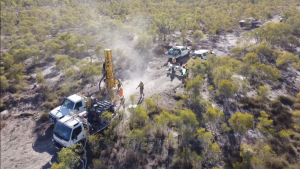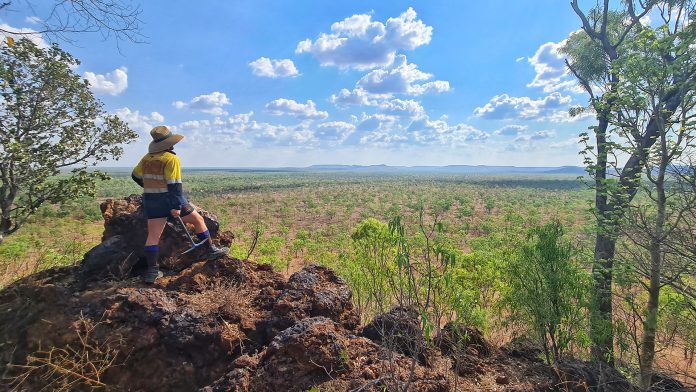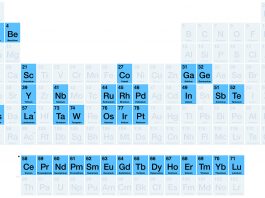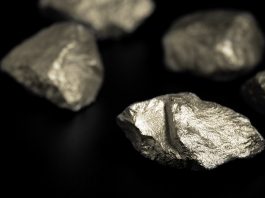Explorer Transition Minerals is focused on developing and advancing a portfolio of high-tech and strategic critical metals projects to support the green economy, energy storage markets, and global decarbonisation.
Australia’s Northern Territory has shot up the ranks of worldwide investment attractiveness based on the latest Fraser Institute annual survey of mining companies. Sitting sixth overall, the survey demonstrates the positive growth in exploration and mining that Australia’s ‘top end’ has experienced concurrently with the release of the country’s significant investment into developing the critical minerals industry.
It comes as some surprise, then, that Transition Minerals’ Barkly project is just the second rare earths project to achieve formal resource classification (Inferred resource, JORC 2012) in the NT after the progress of Arafura’s (ASX:ARU) Nolans project to development status with the support of crucial partnerships with EV manufacturers Hyundai and Kia. Arafura’s market capitalisation reached over AUD$1.1bn in 2023, providing a tantalising glimpse of the possibilities for Transition Minerals, given its proposed securities exchange listing in 2024.
Rare earths and vanadium in the Northern Territory
Following Transition Minerals’ maiden air core drilling programme in the second half of 2022 that was co-funded by the Northern Territory Government, the company has managed to confirm a significant regolith-hosted rare earth deposit underlying a mineralised zone of another critical mineral – vanadium – all within some 30m from the surface.
These dual resources come with some significant numbers from the first-pass drilling results. This includes 40 million tonnes at a very impressive 2,100 ppm total rare earth oxides (TREO), underlying a vanadium resource of 200 Mt @ 0.12 % V2O5 incorporating the further bonus of a significant gallium contribution.
But the resources don’t stop there. The formal Mineral Resource Estimation also indicated potential exploration targets (JORC, 2012) for the rare earths of a massive 200-1,000 Mt @ 1,600-1,900 ppm TREO, in addition to 300-1,000 Mt @ 0.12-0.14% V2O5 (plus gallium) residing in the rare earths’ overburden. The JORC Code stipulates that exploration targets are conceptual in nature, that there has been insufficient exploration to estimate a Mineral Resource, and that it is uncertain if further exploration will result in the estimation of a Mineral Resource.
Further benefits for Transition Minerals
To further highlight the significant opportunity for Transition Minerals, it has 100% ownership of contiguous landholding of over 7,300 km2 in and around the Barkly rare earths and vanadium resources. This represents an enormous opportunity to discover further extensions and repetitions of the deposits already revealed.
Most readers will be well aware that not all deposits of rare earths are created equal. Rare earth deposits can be divided, at a simple level, into hard-rock deposits (e.g. Tanbreez, Mountain Pass, Kvanefjeld, Nolans) and regolith-hosted deposits that lie at the surface in highly weathered and generally unconsolidated material. The surficial and ‘easy’ digging nature of regolith-hosted deposits, in conjunction with typically low levels of radionuclides (uranium, thorium), means that these projects have the potential to be economic at relatively low grades of rare earths compared with the hard-rock deposits.

Transition Minerals’ Barkly deposit exhibits some standout characteristics among the regolith-hosted rare earth deposits. These include an exceptionally high proportion – 33% – of neodymium and praseodymium (Nd, Pr), the major rare earth components of permanent magnets (NdFeB magnets). Permanent magnets convert electrochemical energy into mechanical drive in the rapidly growing electric vehicle market and convert the rotation of wind turbines into electric energy in the globe’s unwavering push for electrification and decarbonisation. Global deposits of rare earths typically only comprise around a 20% proportion of the combined Nd and Pr, thereby highlighting the inherent advantage of the Barkly Project amongst its peers.
Progress has already been made in developing a mineral processing flowsheet for the Barkly rare earths project. Early diagnostic sighter testing has demonstrated that a very respectable 74% of Nd and Pr can be extracted from a composite bulk sample using a simple two-step hydrometallurgical process. Furthermore, initial tests have separately indicated that the Barkly rare earths material can beneficiate into a concentrated rare earth material via traditional flotation techniques. This can have positive downstream economic benefits for infrastructure size and reagent costs.
Rare earths and vanadium for the future
In summary, Transition Minerals has a first-mover advantage in a new rare earths and vanadium district in a top jurisdiction, with an expansive landholding providing plenty of scope for continued exploration success. Its flagship high-grade regolith-hosted Barkly rare earth deposit has an exceptional proportion of key permanent magnet rare earths (Nd, Pr) critical for EVs, wind turbines and the globe’s energy transition and decarbonisation goals.
Transition Minerals is progressing toward achieving a Tier 1 project with vanadium and gallium credits. It offers a bulk mining, low strip opportunity intended for low cost, hydrometallurgical recovery of critical permanent magnet rare earths.
International intelligence agencies, such as Adamas Intelligence, project global supply to be in a significant deficit of demand for NdPr by 2030. Transition Minerals has the quality asset that may seriously reduce this supply deficit in the future so that the pervasive growth of EVs and wind turbines can continue unabated.
Please note, this article will also appear in the seventeenth edition of our quarterly publication.









